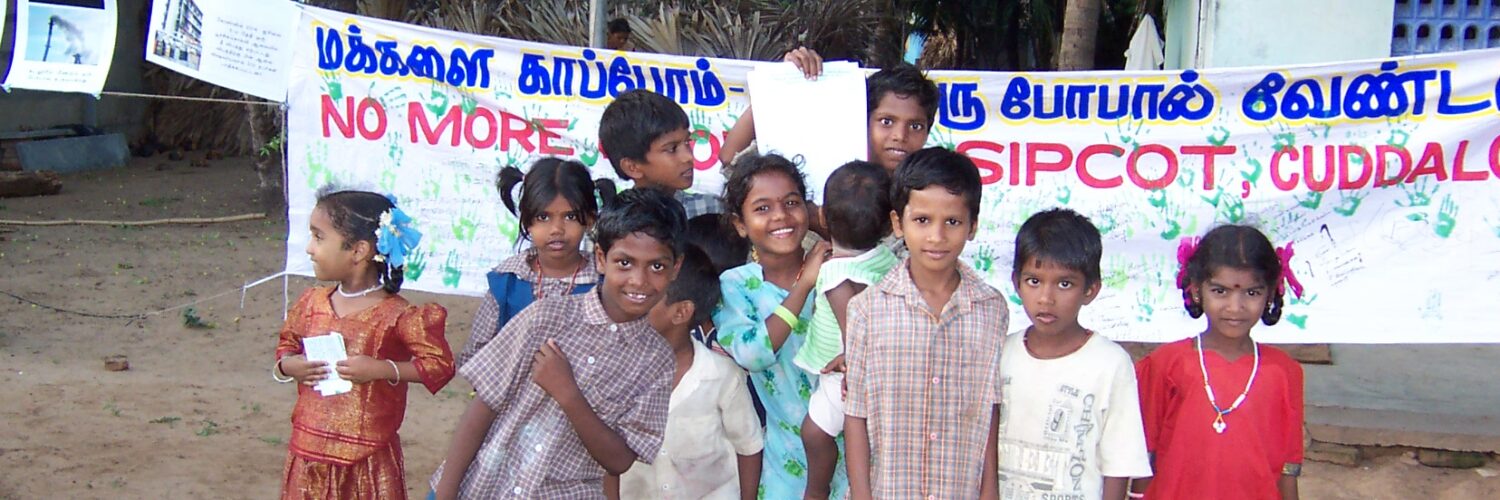July 19, 2010
Gokul Chandrasekar
Expressbuzz
Even while the Madras High Court was hearing the prayers of the ex-workers in 2006 and considering setting up of a committee to assess health damages, Hindustan Lever Ltd (HLL) sought expert opinions from three premier national institutions Industrial Toxicology Research Centre (ITRC), All India Institute of Medical Sciences (AIIMS) and National Institute of Occupational Health (NIOH). All three institutions gave a clean chit to HLL without physically examining even one victim. Their assessment was based entirely on the data supplied by HLL the company in the dock. ITRC went a step ahead and recommended that no fresh health studies were needed.
“The expert opinions given by AIIMS, ITRC and NIOH are biased and unscientific as they derive their opinion solely based on data provided by the company. Neither the point of view of the workers was taken into consideration nor their opinion ever sought. Not a single worker was physically examined for the purpose of providing this opinion,” claims Shweta Narayanan of Corporate Accountability Desk.
HLL flagged these reports before the court to argue that no fresh study need be pursued and no further inquiry was necessary. It is a different matter that it got a rap on the knuckles.
An evaluation of the ITRC report done by US based toxicologist and staff scientist at Environment Law Alliance Worldwide, Mark Chernaik, based on requests from victims and activists, put a question mark on the institution’s credibility. For, it found that ITRC reviewed symptoms irrelevant to effects of mercury exposure. While mercury affects the central nervous system of humans, the report reviews its effects on cardiovascular system, respiratory system and abdomen. Hence if a person steps on a nail, it is no surprise that his shoulder is not injured, notes Chernaik.
The data in the ITRC report also revealed that mercury in urine samples of workers were at alarming levels compared to US standards. “The annual mean of urinary concentration of mercury in general population is approximately 4-5 micrograms/litre, while the concentration reported for the workers of the mercury factory between 1988-2000 was at 21.65 micrograms/litre i.e. 4-5 times higher than the average body burden of mercury among general population,” notes Chernaik’s report. Yet, the ITRC gave a clean chit to HLL claiming the mercury exposure was below permissible levels.
A bench of Madras High Court hearing the case expressed disapproval of the company’s conduct of obtaining reports while the court was hearing the prayers of the employees and in 2007 constituted a committee to assess the health damages caused to employees and their family. The panel had all three institutions that gave thumbs up to HLL earlier ITRC, NIOH and AIIMS plus Maulana Azad Medical College, Delhi and Christian Medical College, Vellore.
The committee conducted a “shoddy health assessment”, claim victims and activists. “About 40 people were examined by the committee in about 20 minutes. In other words, not more than 30 seconds were spent examining a worker,” says Shweta Narayanan. The panel report in December 2007 claimed that it had failed to find sufficient evidence to link current clinical conditions of the workers to mercury exposure in the factory.
But, experts from global institutions confirm that workers were exposed to serious levels of mercury. Based on statistical analysis, Professor Asha Seth Kapadia of University of Texas’ School of Public Health confirmed about the serious levels of mercury.
